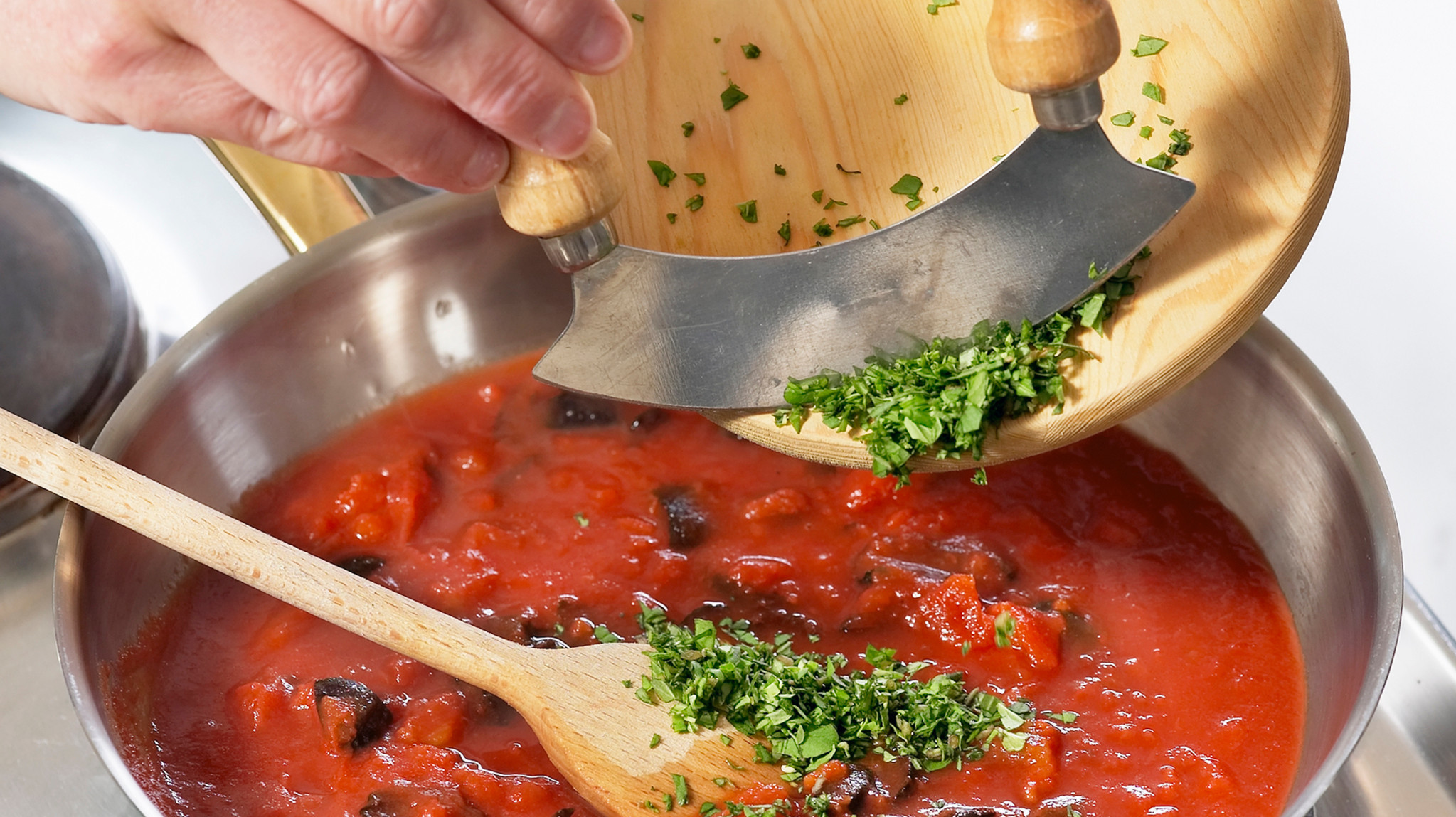How A Mezzaluna Improved My Mental Health In The Kitchen
Panic buying has defined my consumer behavior in this time of plague. Even in calmer days, I considered myself my family's quartermaster, charged with a duty to ensure we are at all times amply provisioned. This instinct, hobby, defect—call it what you want—reached new heights with news of the encroaching pandemic. That's how I ended up with a mezzaluna.
Since our collective retreat, I've been cooking my ass off. One hand is all you need to count the times I've ordered out since early March, a fact I attribute to visiting a psychiatrist for the first time in life last fall, back when I thought the only thing wrong in the world was me. I like to joke that if only coronavirus surfaced before my first appointment, I would be singlehandedly propping up several local takeout joints right now. But the raw, unfunny truth is that I'm glad I got help before the world got sick.
Don't get me wrong, great takeout is among routine life's most sanguine features. But special food is best saved for special occasions, and right now I'm learning to take comfort in tasks like dinner's details. Meals in my house need to be delicious, healthy, and affordable. Presentation is a distant fourth at best, but the mezzaluna closes much of that gap. A couple of graceful motions and presto, there's a delicate garnish sitting atop the slop. The joy of cooking is now both the destination and the journey.
It's not always appealing or practical to cook every night, but I still force myself. Part of me wants to hew closer to my ideal self, a totally normal-in-the-head guy who serves chicken tenders with a dusting of parsley. A guy who has huge inventory of panic purchases to blow through if he wants to minimize food waste. A guy who's lost 30 pounds since February and wants to manage his weight even if (or especially if) he can't manage much else. And a guy that needs to spice up the unbroken chain of sameness with a bit of novelty.

And boy, is the mezzaluna ever a novelty. Like the guillotine, it is limited yet profound in its function. Even the name is fun to say. Pronouncing mezzaluna, or half-moon in Italian, makes me pieno svenimento, which is Italian for full swoon. It's just a knife, but with a twist. Or rather, a curve. It's not used to chop. The rounded blade is supposed to rock repeatedly over soft foods, cleaving them apart with long, clean lines or mincing them into tiny symmetrical bits.
You've likely seen a version of this tool in pizza parlors, where workers divvy up pies with large half-disks of stainless steel. Home versions typically come with less blade and more handle. Knobs attach to both ends, though some versions make do with a single side. Some models double up the blades and leave a small gap in between. Makes for a quicker job, probably, but also carries the potential for lodging chunks of food in hard-to-clean areas.
The design exists outside Italy as well. Kebab shops rely on a cleaver-like variant called a zirh. Indigenous Arctic peoples have used something similar since at least 2500 B.C.E. Inuit, Yupik, and Aleut chefs drew their uluit to slice food, cut hair, and carve out blocks of ice and snow. These tools were essential to the Native Americans that relied upon them.
In modern kitchens, less so. There's nothing a mezzaluna does that cannot be performed with other more common kitchen tools. But it can replace the tedium of rote prep work with a more satisfying task, sometimes with superior results.
Preparing fresh herbs has never been more fun. Mint, parsley, and cilantro are all easily shredded, and depending on the need, they can even be reduced into pastes ready to flavor pesto and sofritos. Broad basil leaves are pulverized but unbruised, ready to seep their oils and aroma all over pizza sliced up by—what else?—a mezzaluna.

The contraption works for larger, firmer items as well. The rolling slices make a quick job of dicing boneless chicken. My mezzaluna is perfect for meeting the vague "roughly chopped" requirement for olives and nuts in many recipes. Garlic works okay as long as it doesn't need to be super fine.
The first couple of rocks inevitably are wide, staccato, and halting, like a drunken gait. If these initial motions are performed without care, food leaps from the blade's path and makes a mess of the work area. There are special sunken boards designed to corral food for just such a purpose, but it's easy enough to learn to rock the blade higher and tighten the slicing motions. On that note, I bought a fancy version of this knife like some kind of mezzalunatic, but several models retail for under $20.
Watching plants splinter apart beneath the repetitive rolling blade is oddly therapeutic during this great unmoored moment where we are forced to find refuge inside our kitchens. For once, I am the agent of chaos instead of its subject. As sure as the meals nourish, the mezzaluna cures.
